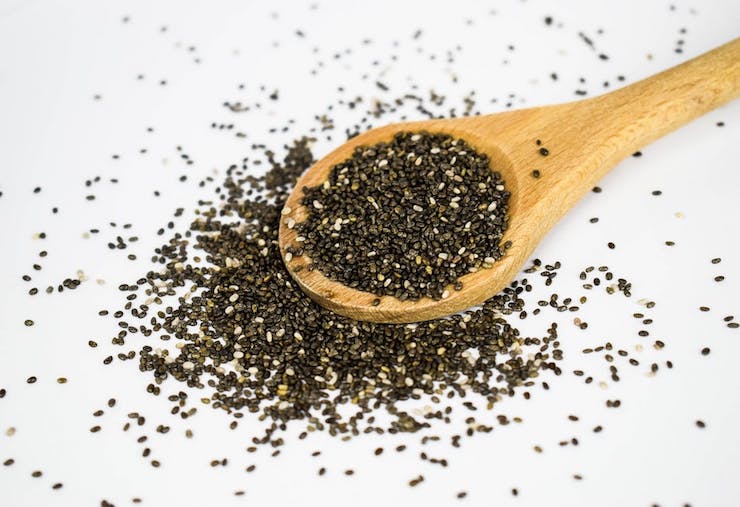
Sponsored Links
Chia seeds are a popular so-called “superfood” these days, but many fad foods don’t really live up to the hype. Not chia – it can totally back up the claims with a stunning level of nutrition in a tiny little package. In fact, gram for gram, chia seeds have:
- 5 x more calcium than milk
- More antioxidants than blueberries
- 3 x more iron than spinach
- 2 x more fiber than oats
Chia is native to Central America, where it was an important food source for Aztec and Mayan civilizations. The people discovered quickly that eating chia could deliver sustained energy. The name “chia” actually means “strength” in the Mayan language.
However, chia seeds may not be good for everybody, and it is possible to eat too much. Stick with us to learn the benefits, the risks, and everything you never knew about chia.
1. Chia is Packed with Nutrients
Chia seeds come from the plant Salvia hispanica, which is actually related to mint. The seeds themselves have little taste, but the sprouts are slightly tangy in flavor (more on that later).
However you enjoy chia, it doesn’t take much to reap incredible nutritional benefits. Just one ounce (two tablespoons) of chia seeds contains:
- Calcium: 18% of RDI
- Manganese: 30% of RDI
- Magnesium: 30% of RDI
- Phosphorus: 27% of RDI
- Iron: 24% of RDI
- Fiber: 11 grams
- Protein: 4 grams
- Plus there is a fair amount of vitamin B3 (niacin), potassium, vitamin B1 (thiamine), vitamin B2, and zinc
Even better, chia seeds are whole-grain, non-GMO, and usually organic. They are also naturally gluten-free.
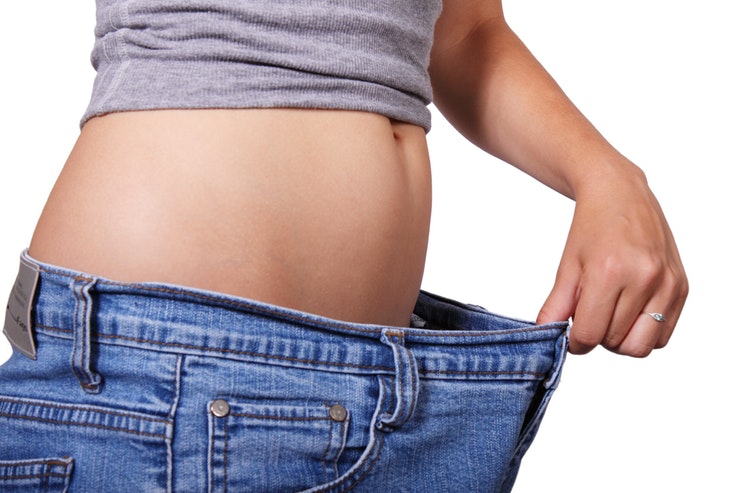
2. Seeds May Help You Lose Weight
Chia has a high level of protein and fiber, both of which can assist with weight loss. The soluble fiber in the seeds absorbs a lot of water and creates a gel that expands in your stomach. That both increases feelings of fullness and slows the digestion of food so that you stay full longer.
Protein is also thought to contribute to satiety. It’s very difficult to maintain a diet that leaves you hungry all the time and chia can be the answer to this problem.
3. You Can Totally Eat the Sprouts
Most people just eat the seeds, but the sprouts are just as healthy and are tasty, too. The sprouts also offer the benefit of chlorophyll, which has additional vitamins and antioxidants.
Do you remember the Chia Pet fad from the 80s? They are actually still made and are a convenient way to sprout chia. If you aren’t interested in a Chia Donald Trump or a Chia Poop Emoji (they make a bunch more, too), you can also sprout chia directly on a terra cotta platter. It’s super easy and you can trim the spouts to add to salads, sandwiches, and soups whenever you need them.
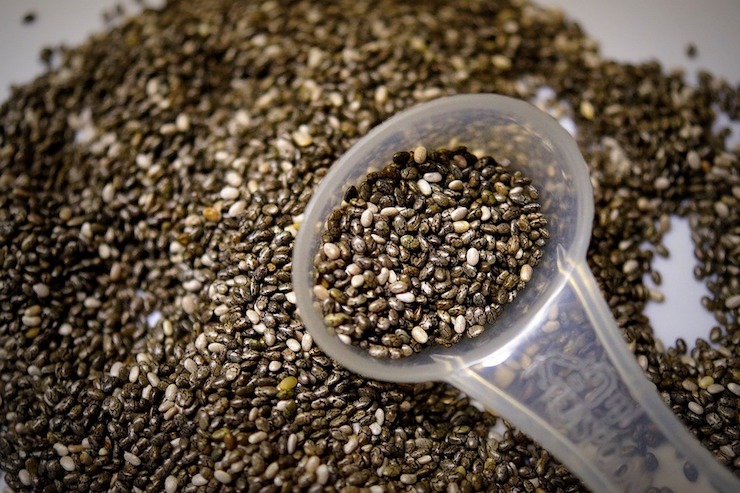
pixabay.com
Sponsored Links
4. Almost All the Carbs are Fiber
In one ounce of chia seeds you’ll get 12 grams of carbs. We tend to think of carbs as something that converts to sugar and spikes your blood glucose levels when eaten. For this reason, many weight loss diets suggest reducing carb consumption to almost nothing. However, when it comes to chia seeds, 11 of the 12 grams of carbs are in the form of indigestible fiber.
That means the seeds will not raise your blood sugar or require insulin for processing. Instead, the fiber feeds the good bacteria in your intestines and improves your overall digestion. It can also add bulk to your stool and help it to pass through the colon easily. If you are looking to add fiber to your diet, you’ll be glad to know that chia seeds are an incredible 40% fiber by weight.
5. Chia is Easy to Add to Your Diet
Chia seeds are pretty bland, so you can add them to almost anything and barely notice that they’re present. They also don’t need to be ground prior to eating. Add your daily dose to yogurt, pudding, oatmeal, or smoothies. When chia seeds are exposed to water, they absorb a large amount and develop a clear gel around them. That mechanism makes them great as a substitute for eggs in recipes and to thicken sauces.
The sprouts, as we mentioned, are quite tasty and give a boost to sandwiches, salads, and soups. They can also be a nice garnish on just about any stir fry or meat dish. If you grow your own sprouts, you can trim them as needed and get the benefit of the freshest possible food.
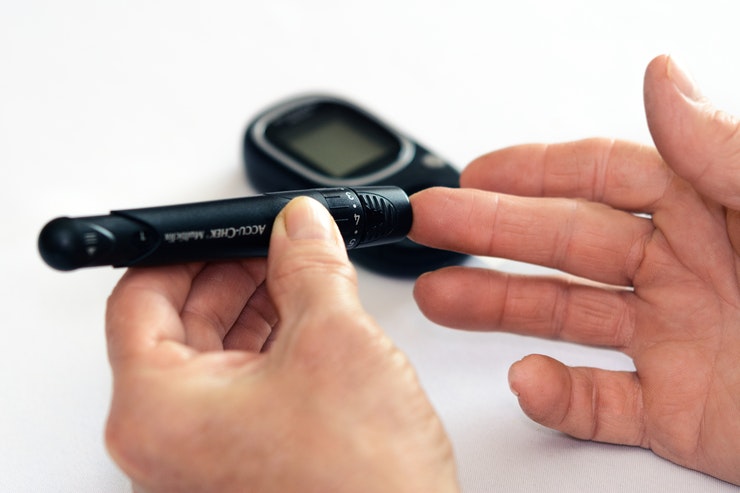
6. They May Interfere with Diabetes and Blood Pressure Medications
If you are taking medication to control your blood sugar, it may be best to steer clear of chia as it is known to lower blood sugar levels. On other hand, chia could help you reduce your dependence on medication. Studies indicate that the high level of fiber in chia seeds slows the absorption of sugar in your blood and protects against dips and spikes. Be sure to speak with your doctor about how diet and medicine can work together to control your diabetes – don’t make a change on your own.
Adding to the amazing health benefits of chia, the concentration of omega-3 fatty acids in chia seeds seem to work as a natural blood thinner and can actually lower blood pressure. If you have hypertension, chia is a great natural way to decrease systolic and diastolic numbers. However, if you’re taking blood pressure medication, you could inadvertently lower your blood pressure too much. Again, speak to your doctor to get the right dosage of both medication and chia to meet your goals.
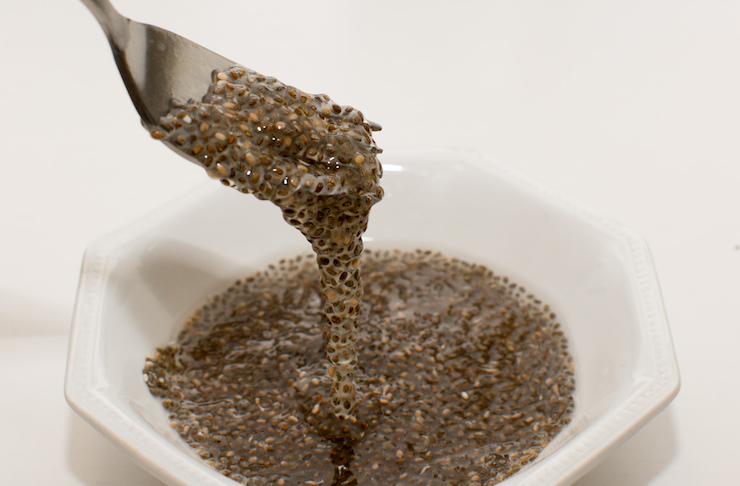
Sponsored Links
flickr.com
7. Soak Seeds First for Safety
Okay, so chia is really good for you whether you eat the seeds or the sprouts. But as a word of warning, always soak the seeds before you eat them! Sprinkling them on food that contains water is just fine, but we don’t recommend swallowing a spoonful of them dry because this poses a serious choking risk.
The reason is that the seeds absorb water and clump together in a gooey mass. In one notable case, a young man ate a tablespoon of dry seeds which he chased with a glass of water. The result was a blockage in his esophagus and a life-saving trip to the emergency room. If you pre-soak your seeds, or sprinkle them on food, you won’t be in danger of getting more in one bite than is safe.
As long as you observe a couple of safety rules, eating chia is a great habit to have. The diverse nutritional profile, ample fiber, and ease of use make it a no-brainer. Just be sure to ask your doctor first if you have diabetes or hypertension. Otherwise, it’s time to cheer for chia!
